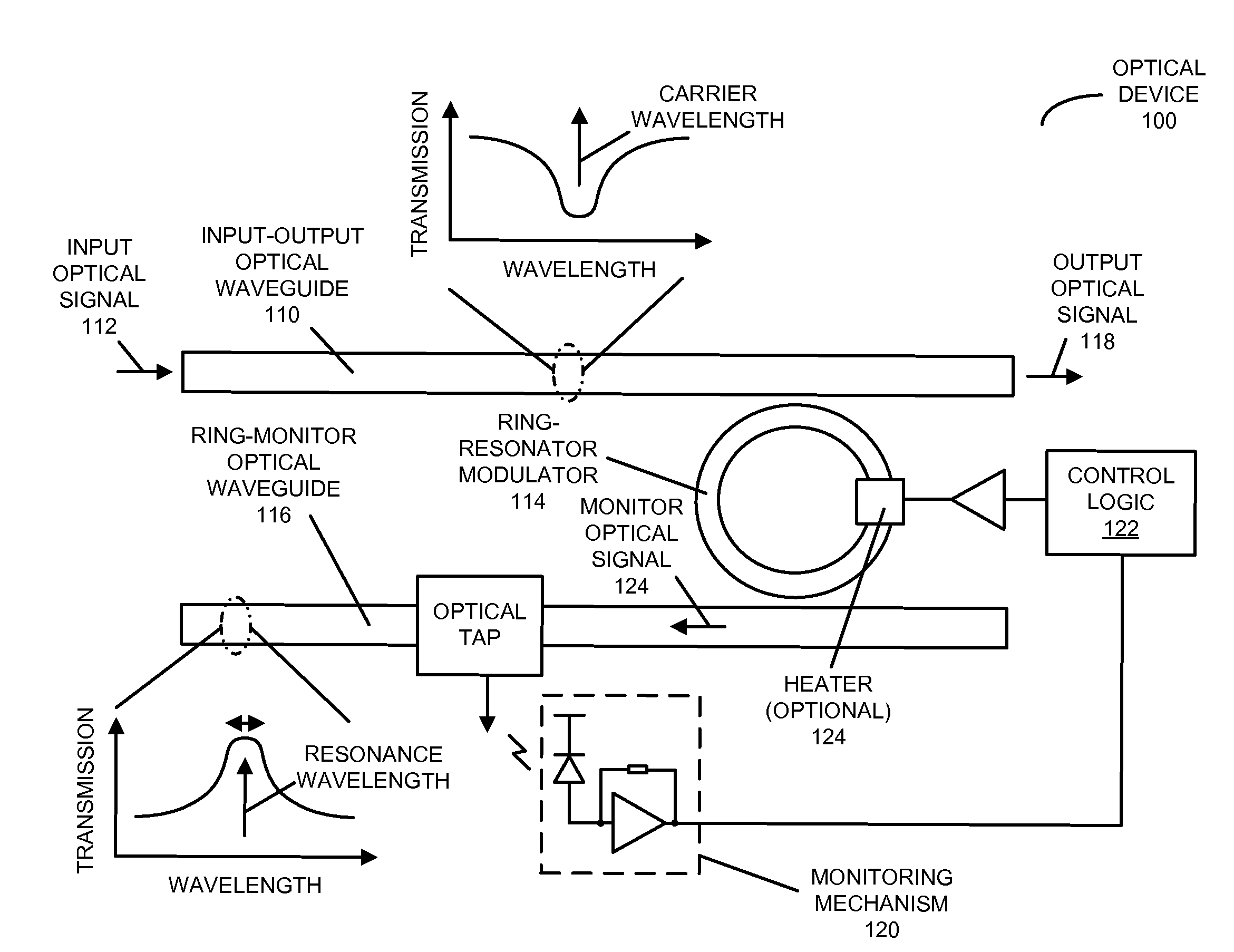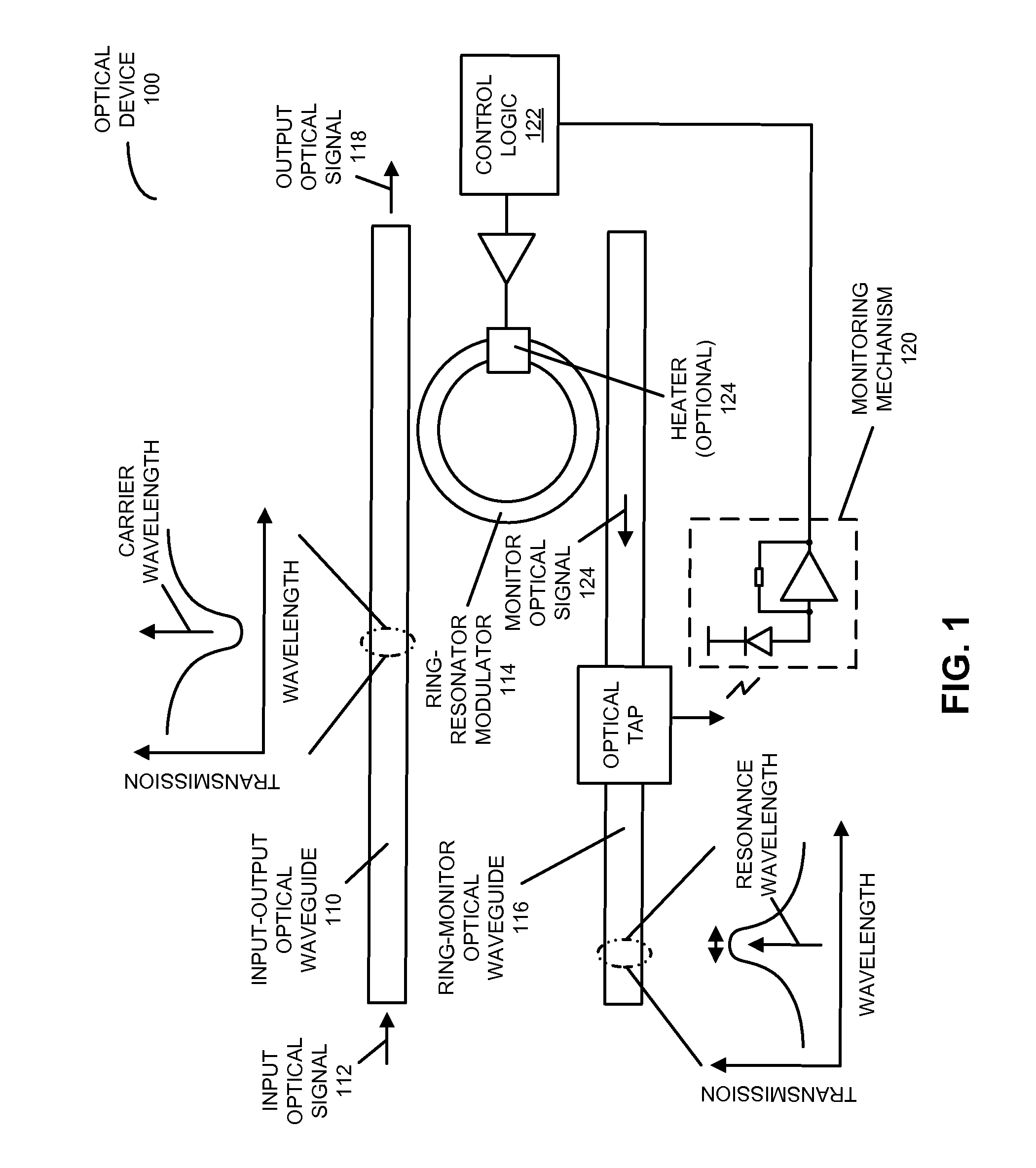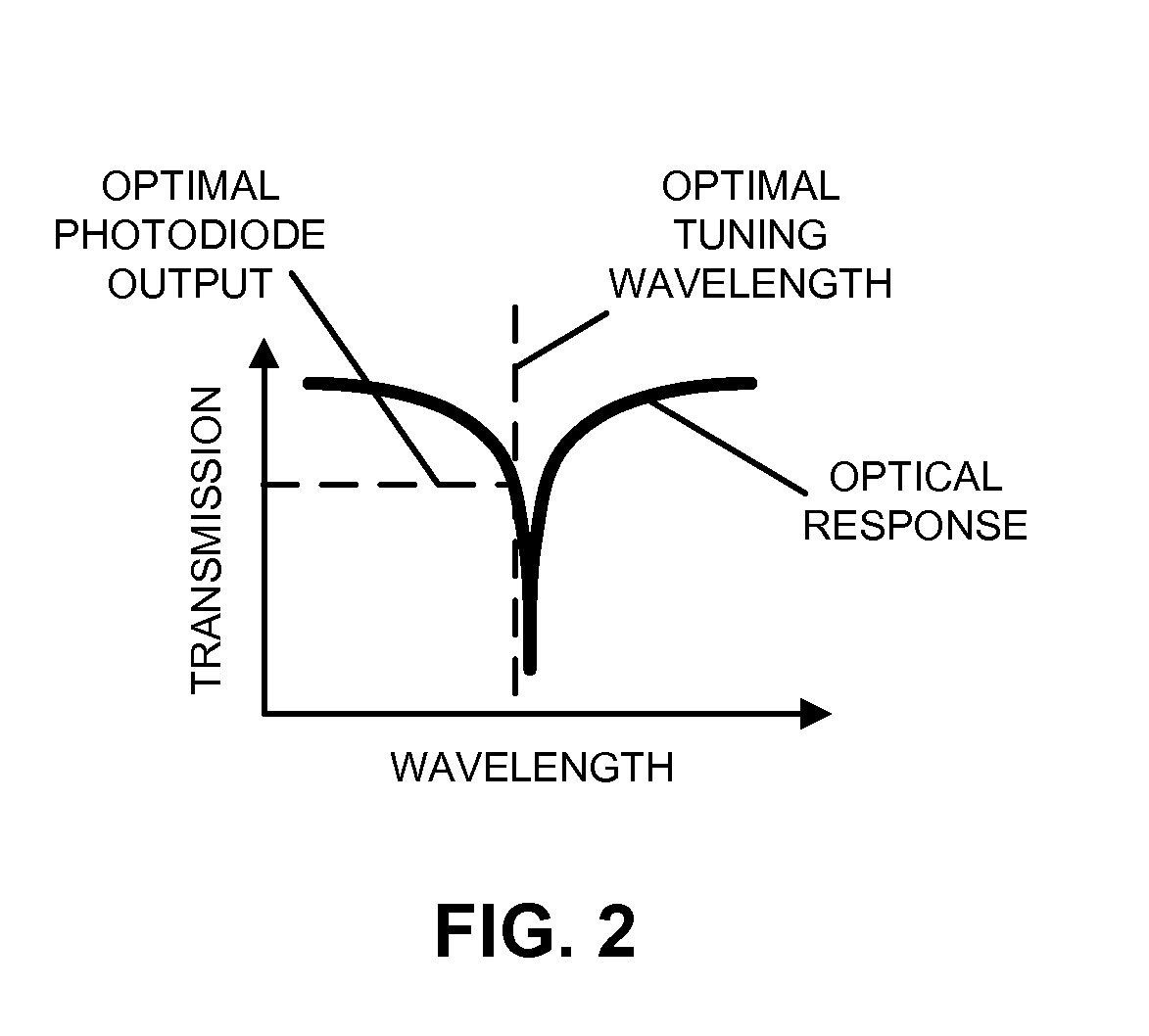In-situ ring-resonator-modulator calibration
a ring-resonator modulator and in-situ technology, applied in non-linear optics, instruments, optics, etc., can solve the problems of reducing the performance of ring-resonator modulators, and implementing silicon-photonic links, etc., to achieve the effect of maximizing the performance metri
- Summary
- Abstract
- Description
- Claims
- Application Information
AI Technical Summary
Benefits of technology
Problems solved by technology
Method used
Image
Examples
Embodiment Construction
[0026]Embodiments of an optical device, a system that includes the optical device, and a technique for locking a resonance wavelength of a ring-resonator modulator to a carrier wavelength of an optical signal are described. In the optical device, a ring-resonator modulator, having an adjustable resonance (center) wavelength, receives the optical signal that includes the carrier wavelength from an input-output optical waveguide. Then, a monitoring mechanism monitors a performance metric (such as an average power or a signal swing) of a monitor optical signal from the ring-resonator modulator. Moreover, control logic in the optical device adjusts the resonance wavelength based on the monitored performance metric so that the performance metric is optimized (e.g., the resonance wavelength is locked to the carrier wavelength). In particular, the control logic may apply a change to an adjustment signal that is provided to the ring-resonator modulator. If the change increases the performan...
PUM
 Login to View More
Login to View More Abstract
Description
Claims
Application Information
 Login to View More
Login to View More - R&D
- Intellectual Property
- Life Sciences
- Materials
- Tech Scout
- Unparalleled Data Quality
- Higher Quality Content
- 60% Fewer Hallucinations
Browse by: Latest US Patents, China's latest patents, Technical Efficacy Thesaurus, Application Domain, Technology Topic, Popular Technical Reports.
© 2025 PatSnap. All rights reserved.Legal|Privacy policy|Modern Slavery Act Transparency Statement|Sitemap|About US| Contact US: help@patsnap.com



